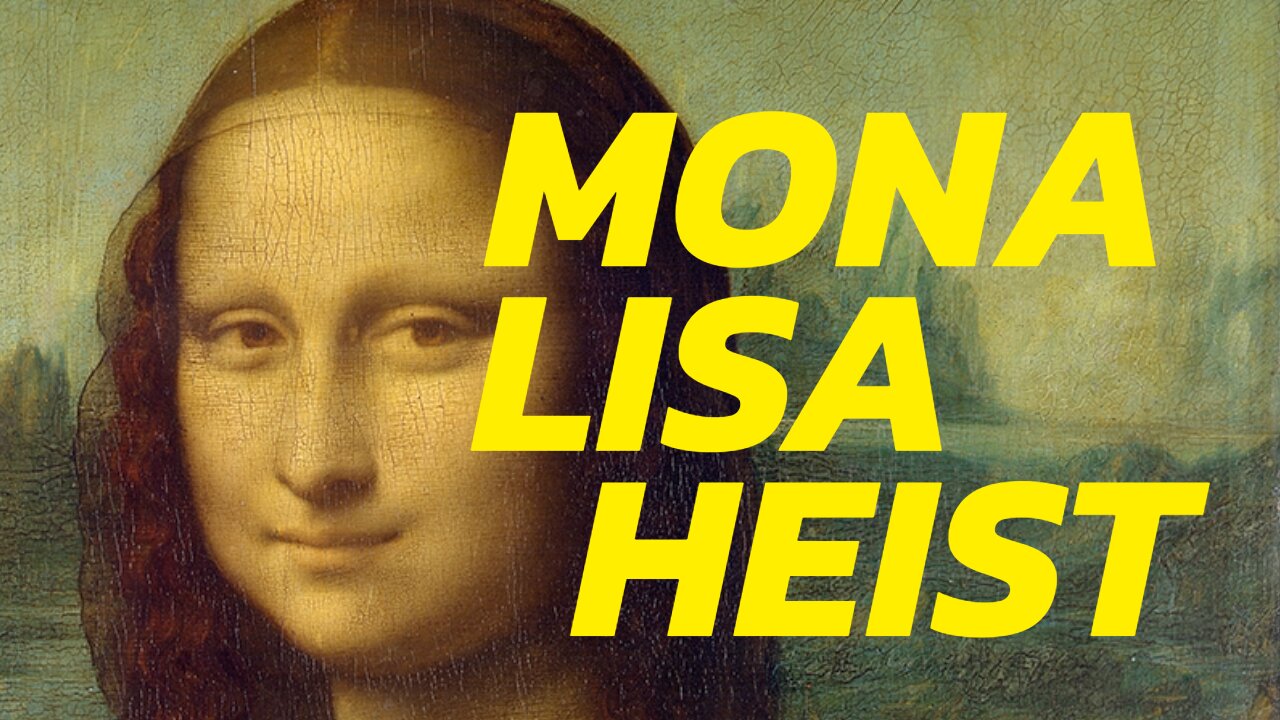Premium Only Content

The Bold Heist of the Mona Lisa: Vincenzo Peruggia's Daring Theft
The Mona Lisa was painted by Leonardo da Vinci in the early 16th century and is considered one of the most famous paintings in the world. The Mona Lisa has captured hearts worldwide with her mysterious smile.
Vincenzo Peruggia, Italian by birth, had worked as a handyman at the Louvre, where the Mona Lisa was on display. He claimed to have a personal connection to the painting and also felt a deep sense of patriotism towards the painting. He believed that Italy had lost the painting to France during the Napoleonic era, and Peruggia was determined to bring it back home.
The Louvre was considered impenetrable. But Peruggia had a plan. He slipped into the museum on an early August 21 morning in 1911, disguised as a worker. Using the same entrance as the other Louvre staff, he exploited the moment before the doors opened to the public.
Dressed inconspicuously in one of the museum's signature white smocks, Peruggia blended seamlessly with the bustling staff. When the room housing the Mona Lisa emptied, he casually lifted the painting from the wall and carried it to a nearby service staircase.
In this hidden corner, Peruggia removed the painting's protective case and frame. With his borrowed identity shed, he wrapped the artwork in his own smock, improvising a makeshift covering. Unfazed, he simply held the famous piece under his arm and left the Louvre the same way he had entered, fading into the crowd.
The theft of the Mona Lisa was a major scandal, and it made headlines around the world. The French government was humiliated, and the police were baffled. They had no leads, and no one could imagine who would want to steal such a famous painting.
Peruggia stashed the Mona Lisa away in a trunk in his apartment in Paris. But over time, the stress of keeping such a valuable artwork hidden became too much.
He eventually went back to Italy and took the painting with him to his apartment in Florence. But as days went by, his patience wore thin.
His downfall happened when he got in touch with Mario Fratelli, who ran an art gallery in Florence. He wanted to sell the famous artwork. Fratelli then got Giovanni Poggi involved. Poggi was in charge of the Uffizi Gallery, and he confirmed that the painting was real. They took the painting for "safekeeping" and tipped off the police, who arrested Peruggia.
In 1913, the Mona Lisa was returned to the Louvre. Interestingly, while the painting was already famous, the theft actually made it even more well-known. It turned the painting into even more of an international icon.
Peruggia's motives for stealing the Mona Lisa were never fully clear.
He asserted that he was driven by patriotism. His intention was to return the painting to Italy after he believed it had been taken by Napoleon. Working at the Louvre, he learned of Napoleon's appropriation of Italian artworks during the Napoleonic Wars.
However, this claim was historically inaccurate. In reality, the Mona Lisa had been given as a gift by Leonardo da Vinci to Francis I in the 16th century, long before Napoleon's era, rendering Peruggia's reasoning mistaken.
Another hypothesis suggests financial gain as his motivation. Advocates of this theory argue that if Peruggia genuinely aimed for patriotism, he would have donated the painting to an Italian museum instead of attempting to profit from its sale.
In 1913, Vincenzo Peruggia stood trial for his audacious theft. Interestingly, public sentiment in Italy leaned toward sympathy, considering him a national hero. He received a relatively mild sentence of one year and fifteen days in prison, ultimately serving only seven months behind bars.
Following the theft saga, Peruggia took up service in the Italian army during World War I. While in action, he was apprehended by Austria-Hungary and spent two years as a prisoner of war until the conflict's conclusion led to his liberation.
After his release he married and welcomed a daughter named Celestina. He then returned to France, resuming his profession as a painter decorator under his birth name, Pietro Peruggia.
Peruggia's theft of the Mona Lisa remains one of the boldest art heists in history. It captured the world's attention and even inspired countless books, movies, and documentaries.
It is still one of the most famous art thefts of all time. The painting's recovery was a victory for the French government, and it helped to restore public confidence in the Louvre.
Photo credits - Heiddy2, juandinella, Diego Delso, Norberto Kolus, Michelle Maria @ wikicommons
Music theme - Trumpets in Your Ears by Wowa & Chris Rede @unminus.com
-
 LIVE
LIVE
Exploring With Nug
7 hours agoExploring Texas Creeks for Fossils – Prehistoric Treasures Everywhere!
132 watching -
 9:02
9:02
MattMorseTV
4 hours ago $0.68 earnedTrump's FBI just DECLASSIFIED the UNEDENIABLE PROOF.
1.36K22 -
 LIVE
LIVE
sophiesnazz
1 hour ago $0.01 earned6kd in these ghost lobbies !socials !specs
83 watching -
 25:39
25:39
MYLUNCHBREAK CHANNEL PAGE
21 hours agoThey Already Had A.I.
14.1K16 -
 LIVE
LIVE
GamerGril
3 hours agoI'm Not Lost, I'm Just Wandering Until I Know Where I am | The Evil Within
93 watching -
 LIVE
LIVE
Biscotti-B23
4 hours ago🔴 LIVE $150+ TOURNAMENT 🏆 DEMON SLAYER HINOKAMI CHRONICLES 2
38 watching -
 1:45:55
1:45:55
Jeff Ahern
3 hours ago $9.30 earnedThe Saturday Show with Jeff Ahern
24.3K6 -
 LIVE
LIVE
cosmicvandenim
5 hours agoCOSMIC VAN DENIM X TRAGIKxGHOST | DEVOUR | Horror Game
124 watching -
 37:36
37:36
Tactical Advisor
3 hours agoOpening Mystery Box & New Thermal | Vault Room Live Stream 036
18K4 -
 1:23:33
1:23:33
Steve-O's Wild Ride! Podcast
2 days ago $12.32 earnedRainn Wilson and Steve-O Break The Silence On Their Long Friendship | Wild Ride #263
26.3K15